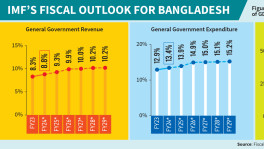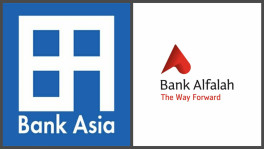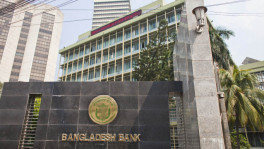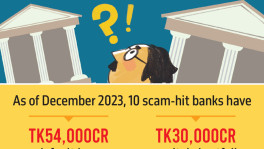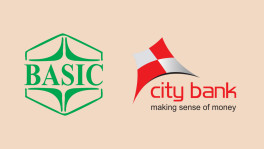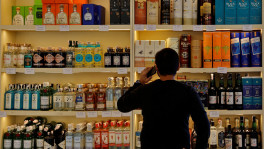Advertisers are boycotting Facebook. Can traditional media benefit from that?
As they stop investing in Facebook and Instagram, many marketers will redirect those dollars. Unilever has decided to shift its US digital ad budget to other platforms. But it is unclear whether they would shift the budget to traditional media or other digital platforms

The news that Facebook had lost USD 7.2 billion with advertisers boycotting them was certainly music to the ears of traditional media organisations.
For years, the traditional media has been losing its ad revenues to digital companies, with grave consequences to the state of journalism around the world.
To give an example:
In 2016, the market size of internet advertising was valued at only about USD 68.1 billion, and the traditional media outlets, including cinema ads, were valued at USD 141.9 billion. In 2019, digital ads in the US surpassed USD 129 billion, which is estimated at 54.2 percent of the total US ad spending, according to Statista.
In the span of just four years, the digital industry almost doubled.
According to eMarketer, Google and Facebook grabbed 60.9 percent of digital ads spending in the US in 2019, creating a digital duopoly in the industry.
Facebook earned a staggering USD 70 billion last year, most of it coming from ad revenue.
The recent boycott happened because a group of civil rights organisations, including the Anti-Defamation League, the NAACP and Color of Change, called on businesses to "hit pause on hate" campaign on June 10, 2020. They asked the advertisers to not advertise on Facebook in July for not doing enough to combat hate speech.
The "Stop hate for profit" list shows that more than 100 companies have refrained from joining the campaign. It includes big names such as Coca-Cola, Unilever, Verizon, etc. Though other social media platforms have been under scrutiny for the same reason, Facebook came under focus for being the largest social media with almost 3 billion users globally.

According to a Bloomberg report, the ad decline erased USD 56 billion from Facebook's market value.
But will traditional media stand to benefit from any of this?
It is necessary to observe the incident carefully to understand whether the traditional news industry can stand to gain anything.
Although more than 100 companies joined the boycott, the amount of money invested is still unclear. For many brands, Facebook ads are just a small fraction of their marketing budget. According to Pathmatics data, the highest-spending 100 brands accounted for USD 4.2 billion on Facebook advertising last year, around six percent of the platform's total ad revenue.
Additionally, almost 76 percent of Facebook's earnings comes from small and medium businesses that are unlikely to join the campaign as they may find Facebook's targeted advertising too influential and effective to resist while they try to revive their business amid the Covid-19 pandemic.
The essence of the campaign is to not post ads in July, and the advertisers can return to the platform from August 1, forgetting what it was all about! In general, advertisers do not stay away from influential platforms with targeted advertising for long.
There is also another possibility. Facebook has been labelled as a "toxic brand" since the Cambridge Analytica scandal, antitrust investigations, and congressional hearings. This boycott might be the first indication that Facebook has started to become unappealing to advertisers, and they may no longer want to advertise their products on the platform until it fixes its reputation.
Nancy Smith, president of advertising consulting firm Analytic Partners, said to CNN that a driving factor for many of the participating companies is "brand safety" - the desire for their advertisements not to show up beside conspiracy theories or hateful rhetoric.
As they stop investing in Facebook and Instagram, many marketers will redirect those dollars. Unilever has decided to shift its US digital ad budget to other platforms. But it is unclear whether they would shift the budget to traditional media or other digital platforms.
Ads and free press
The news industry may seem like a powerful enterprise from the outside, but it has always been a shaky business. During the early 19th century, the press industry was known as the "party press" era, as newspapers relied on patrons affiliated with political parties.
It was advertising that allowed newspapers to build the modern standard of "objective" journalism by moving away from patronage. And soon, ads became the primary source of earning for any newspaper.
Things first started to change for the print media with the emergence of radio and television. As newspapers were not the only source of news anymore, the newcomers started claiming advertisements and became affiliated with the news industry.
With the emergence of the internet in 1990, ads started going digital. Not wanting to be left behind, most traditional news media outlets launched a web version. However, things headed further south for the industry once social media entered the market, grabbing the majority of digital ads.
While ad revenue margins widened for the digital wing, it started narrowing for traditional media outlets.
So, how did the drop in conventional ad spending affect the traditional media?
In an interview with 24/7 Wall St., Penny Abernathy, the Knight Chair in Journalism and Digital Media Economics at the University of North Carolina, said that the US has lost approximately 2,030 daily and 70 weekly newspapers since 2004.
Revenue sharing models
In recent years, the revenue-sharing models of companies like Facebook have also come under scrutiny. While Facebook, Google and Youtube are effective platforms to reach people in millions, the fact remains that its individuals and organisations, including media organisations, who create the original content. So how much of the digital company profits make their way to the content publishers?
According to Google's report, it shares 68 percent of its ad revenues with the ad publishers. On the other hand, YouTube, the largest platform of video contents according to Influencer Marketing Hub, pays an average amount of USD 18 per 1,000 views to a YouTube channel, whereas, it gets an average amount of USD 180 per 1,000 views from the publishers and keeps 90 percent of the revenue for themselves.
Additionally, according to WebFX, Facebook advertising costs around USD 7.19 per 1,000 views. SolutionHow says that Facebook pays the publishers any amount between a dollar to five, depending on the country of origin.
Seemingly, the digital platform duo is stashing away a significant amount of revenue relying on others' content.


 Keep updated, follow The Business Standard's Google news channel
Keep updated, follow The Business Standard's Google news channel
